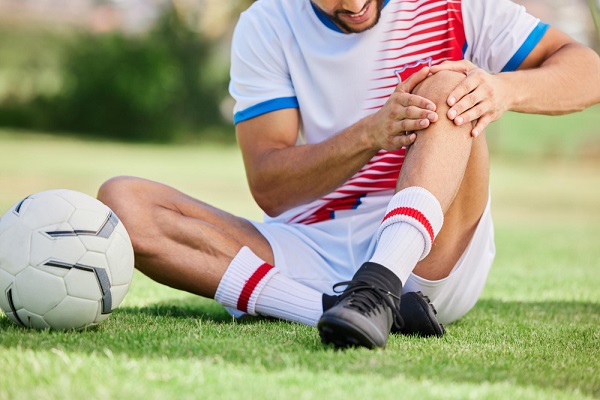Soccer often gets grouped with non-contact sports like tennis or swimming, but anyone who’s felt an elbow in the ribs or a clash of heads knows better. From tactical shoulder bumps in midfield to leaping headers in the box, it’s the very physicality—legal and accepted—that drives the game forward. Referees carefully distinguish between “careless” and “reckless” tackles, yet even shoulder-to-shoulder challenges carry risks of bruises, strains, and the occasional knock to the head.
While soccer may not shout “collision sport” the way American football does, it still ranks among the most dangerous contact sports when it comes to injury rates. Players face everything from twisted ankles and torn ligaments to concussions from aerial duels or accidental clashes. Learning how to recognize symptoms early—and seeking proper concussion treatment when needed—can make all the difference between a quick recovery and long-term damage.
What Defines a Contact Sport?
Sports fall into three categories based on how much and how forcefully players interact:
- Collision sports like American football permit intentional, high-impact hits as part of the game.
- Contact sports such as soccer and basketball involve regular bumps, body checks, and tactical challenges, but these contacts are usually incidental rather than the primary objective.
- Non-contact sports like tennis or swimming prohibit any player-to-player contact.
Soccer firmly sits in the contact category: shoulder-to-shoulder duels for ball possession, slide-tackles on the turf, and aerial contests for headers are all built into its rules. While these actions aren’t meant to injure, their frequency and competitive nature make effective soccer safety measures essential.
Is Soccer Dangerous? Injury Rates & Risk Factors
Soccer isn’t inherently “safe” simply because it lacks the pads and helmets of collision sports. Across all levels, the game carries notable injury rates: youth players suffer between 9 and 48 injuries per 1,000 hours of play, while professionals experience 2.5 to 8.7 injuries in the same timeframe. These figures place soccer squarely among the higher-risk contact sports—more dangerous than non-contact activities like golf, but generally less perilous than American football or rugby.
Contact vs. Skill-Related Injuries
While shoulder-to-shoulder challenges and slide tackles often catch the eye, a surprising share of soccer injuries stem from non-contact actions. Rapid changes of direction, sudden accelerations, and decelerations place great stress on knees and ankles, leading to sprains and muscle strains even without any player collision.
High-Risk Scenarios on the Pitch
- Header Duels: Jumping for aerial balls can result in head-to-head impacts or awkward landings.
- Slide Tackles: Mistimed tackles risk studs-up collisions and leg fractures.
- Goalkeeper Challenges: Diving at feet or posts during saves exposes goalies to concussions and contusions, underscoring the need for proper concussion treatment protocols.
Understanding these risk factors helps coaches, parents, and players balance the physical nature of soccer with the preventive measures—proper technique, protective gear, and education—that make the sport safer for everyone.
Common Soccer Injuries
Even the most skilled players aren’t immune to the physical toll of the pitch. Here are the injuries you’re most likely to encounter—and brief notes on prevention and care:
- Ankle Sprains & Knee Ligament Tears
Quick pivots, cuts, and sudden stops place immense stress on ankles and knees. Proper warm-ups, strength training, and taping can reduce risk. - Muscle Strains
Sprinters often suffer hamstring, groin, or calf pulls when accelerating or decelerating too rapidly. Incorporate dynamic stretching and progressive sprint drills into training. - Concussions & Head Clashes
Aerial duels and accidental collisions can cause concussions, even without protective headgear. Prompt recognition and concussion treatment—including immediate removal from play—are critical to long-term health. - Overuse Injuries
Repetitive running and striking motions can lead to jumper’s knee (patellar tendonitis) or shin splints. Balancing rest days with cross-training helps prevent these chronic issues.
Understanding these common injuries—and implementing proper conditioning, technique, and medical protocols—keeps players safer and the beautiful game as injury-free as possible.
Soccer Safety: Gear and Best Practices
Staying safe on the pitch starts with reliable equipment. Every player needs properly fitted shin guards to shield against kicks and tackles, and cleats whose stud patterns deliver traction without digging too deeply into turf or soil. For youth learning to head the ball, soft headbands or padded caps can help cushion the impact during drills.
Beyond gear, teaching correct technique is crucial. Coaches should emphasize controlled tackling—where body positioning, timing, and follow-through are drilled under supervision—to minimize dangerous collisions. A few drills to reinforce this include:
- Shadow tackling: slow-motion practice without a ball to master angles
- One-on-one containment: focusing on body lean and foot placement
- Reaction stops: training quick deceleration to avoid overextension
Developing players’ spatial awareness also reduces accidental contact, as athletes learn to anticipate opponents’ movements and avoid high-force impacts.
Finally, maintaining a culture of safety through rigorous game management keeps soccer competitive yet respectful. Referees must enforce rules against reckless and excessive force swiftly, while captains and teammates model sportsmanship by acknowledging fouls rather than risking retaliation. Together, the right equipment, sound technique, and respectful play ensure that soccer remains both exhilarating and as safe as possible.
Reducing Risk: Tips for Players & Coaches
Effective injury prevention begins long before kickoff. A thorough warm-up—incorporating dynamic stretches like leg swings, walking lunges, and hip openers—prepares muscles and joints for the demands of play. Off-field conditioning focused on core stability, glute strength, and ankle mobility builds the foundation for a resilient body that weathers tackles and rapid direction changes.
Equally important is load management: rotating high-intensity practices with adequate rest days prevents the chronic aches and overuse conditions that often lead to shin splints, tendonitis, or knee pain. Coaches can structure weekly plans so that players ramp up training volume gradually, monitor fatigue levels, and scale back when warning signs appear.
When it comes to head injuries, a strict concussion protocol is non-negotiable. Any player experiencing dizziness, headache, or balance issues after an aerial challenge should be removed immediately and undergo a standardized evaluation, only returning once cleared by a medical professional. Educating athletes and sideline staff on these steps ensures that concerns about “toughing it out” don’t override the priority of long-term brain health.
Final Whistle: Embrace Contact, Prioritize Safety
Soccer is undeniably a contact sport—its blend of shoulder-to-shoulder duels, aerial battles, and tactical challenges relies on physical engagement. That inherent contact carries injury risk, but with clear rules, well-fitted gear, safe tackling techniques, and prompt concussion treatment protocols, players at every level can enjoy the thrill of the game without compromising health. Embrace soccer’s physical nature—but always prioritize safety.
Looking for more tips and advice? You’re in the right place! Make sure to bookmark our page and come back to check out more interesting articles







